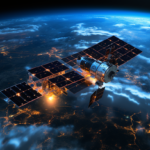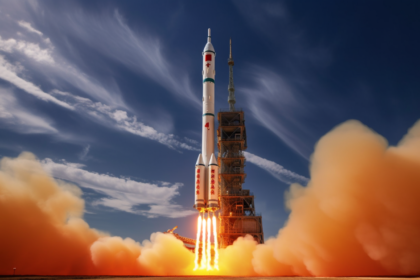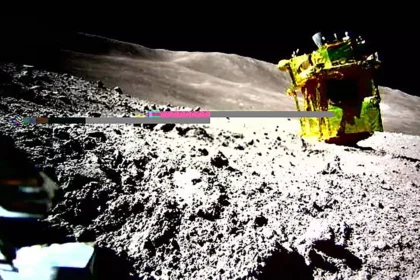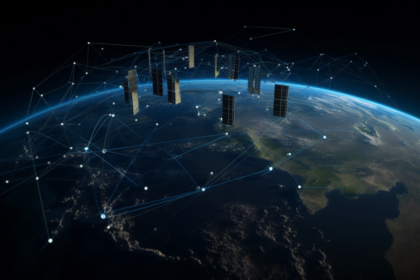The enormous Universe has many mysteries waiting to be revealed. We have used fantastic robots to explore distant celestial planets to comprehend the universe. These robots have explored the unknown, altering our understanding of the universe from Mars’ bleak plains to distant moons’ cold lakes. This article explores space exploration‘s mechanical pioneers, from Mars rovers to interstellar probes and drones. We explore their missions, discoveries, and potential while facing the obstacles of space missions & travel.
Roving The Red Planet: Mars Rovers
Mars, the “Red Planet,” has long fascinated scientists and space enthusiasts. Unknown history, ancient water, and possible life make it a mysterious planet. The Mars rovers launched by NASA and other space organizations aim to solve its secrets. The first successful Mars rover was Sojourner, part of Mars Pathfinder, in 1997. A technical wonder for its day, this 23-pound six-wheeled rover. It performed Martian surface experiments, yielding crucial data for future missions.
Future Mars rovers were more advanced. Spirit and Opportunity arrived on Mars in 2004 and outlived their mission. Solar-powered robots studied the planet’s geology, temperature, and water. Spirit found a hydrothermal system, suggesting Mars was habitable. Curiosity, another Mars rover, arrived in 2012. This radioisotope thermoelectric generator-powered vehicle was more extensive and more competent than its predecessors.
Curiosity’s purpose is to study Mars’ past and current habitability, and it found an old lake. The latest Martian robot, Perseverance, arrived in February 2021. Perseverance seeks ancient life and samples for Earth’s return. The Mars rovers have changed our view of the planet. They’ve shown Mars’ former liquid water, which is necessary for life. They’ve studied Martian geology and are looking for microbial life on Perseverance. These robotic explorers have increased our understanding of Mars and paved the way for human exploration.
Unravelling The Mysteries Of The Moon: Lunar Rovers
For ages, humans have been fascinated by Earth’s nearest neighbour, the Moon. It was explored robotically in the 20th century. Our grasp of Earth’s natural satellite has grown thanks to moon rovers. The Apollo LRVs are the most famous lunar rovers. These electric cars debuted in 1971 with Apollo 15. LRVs enabled astronauts to traverse more lunar ground and gather more samples. These missions transformed the Moon’s geology and exploration.
Recently, moon rovers have resumed lunar exploration. The Chang’e missions’ Chinese Yutu-1 and Yutu-2 rovers produced significant Moon farside findings. They studied lunar dirt, plotted geology, and discovered new lunar rocks. In the future, lunar rovers will be critical to NASA’s Artemis effort to return people to the Moon. These rovers will assist human missions and perform independent scientific investigations, perhaps revealing the Moon’s mysteries and resources.
Beyond Our Solar System: Interstellar And Asteroid Rovers
Robotic missions have focused on planetary exploration, although interplanetary and asteroid research is developing. These missions research extrasolar planets using robotic landers and rovers. One of the most noteworthy missions in this category is the Parker Solar Probe, a spacecraft that bravely studies the Sun.
Launched in 2018, it’s planned to travel into the Sun’s outer atmosphere and deliver vital solar activity data for Earth’s space weather and communication systems. Asteroids, or “minor planets,” are another robotic prospect. In 2020, NASA’s OSIRIS-REx spacecraft acquired a Bennu sample and returned it to Earth in 2023. This expedition illuminated the early solar system and near-Earth asteroids’ dangers.
In addition, interstellar robotic missions like Breakthrough Starshot propose sending ultra-fast probes to neighbouring star systems. These missions’ sophisticated propulsion technologies and small payloads might enable exoplanet and distant celestial body research. Lucy and DART (Double Asteroid Redirection Test) will study faraway asteroids and their collision dangers.
Exploring The Ice Worlds: Oceanic Rovers
We are considering the habitability of ocean worlds in our solar system as we seek life. Europa, Enceladus, and Titan may contain underground seas underneath their ice crusts. Robotic missions are being developed to study these subterranean oceans and their habitats. Europa, Jupiter’s moon, is a top exploration target. Its frozen surface may hide an underground ocean that may connect the moon’s rocky mantle. A Europa lander or rover may research the ice, find organic chemicals, and explore life.
Another fascinating destination is Saturn’s moon Enceladus. The geysers blast water vapour and ice particles into space, indicating a deep ocean. Robotic missions might sample these plumes and examine Enceladus’ ocean composition for life. Titan, Saturn’s most giant moon, has a thick atmosphere and methane-ethane lakes.
Drones or submersibles might explore Titan to examine its unique chemical and geology. These missions might reveal methane-based life’s habitability. Robots have unique problems while exploring oceans. Submersibles or landers must cross unpredictable terrain, harsh cold, and intense radiation. The potential benefits are enormous since these missions might address fundamental concerns regarding life beyond Earth.
Innovations In Planetary Drone Technology
Drones, or unmanned aerial vehicles (UAVs), have transformed Earth exploration and are spreading to distant planets. Planetary drones can examine, explore, and reach unreachable locations. Planetary drones like the Mars Helicopter Ingenuity, which escorted the Perseverance rover, are significant. This helicopter was the first-ever powered, controlled flight on another planet.
It completed many successful test flights and produced significant data on Mars’ thin atmosphere. Drones may be used on other planets than Mars. The Dragonfly mission to Saturn’s moon Titan will use a rotorcraft to fly great distances and research the moon’s various habitats. Planetary drones are mobile and can swiftly cover enormous regions.
They may give airborne images and surveillance and help find scientifically intriguing areas. Communication lags between Earth and faraway planets prevent real-time remote piloting. Therefore, these drones are highly autonomous. Drone technology will allow more unmanned airborne explorers on other planets, helping us investigate their complicated geology, atmospheres, and habitats.
Challenges And Opportunities In Robotic Space Exploration
Robotic space exploration has advanced since lunar and planetary missions. Modern robotic explorers have AI, sophisticated instrumentation, and autonomous decision-making. They still confront many obstacles. Space is harsh and unexpected, which is a difficulty. Extreme temperatures, radiation, micrometeoroid impacts, and space vacuum may challenge robotic systems. Engineers must create robots that can cope with harsh environments and last long missions.
Another area for improvement is communication. Many robotic missions are far from Earth, delaying contact. Robots must be largely independent since real-time control is impossible. They must make judgments using pre-programmed instructions and on-site data. Future robotic missions may use resources, which is fascinating.
For instance, the Moon contains copious water ice that might be utilized for life support or propulsion. Robotic expeditions may prove these resources are feasible. AI and machine learning are also changing robotic exploration. Robots can now assess data in real-time, make sophisticated algorithm judgments, and react to unforeseen scenarios. Missions to faraway celestial planets where Earth-based control is impossible need this autonomy.
Conclusion
From Mars rovers to moon drones, robotic explorers have changed our view of the universe. They’ve studied alien geology, life, and the solar system. Spirit, Opportunity, Curiosity, and Perseverance have made Mars seem like home, thanks to their accomplishments. We’ve discovered the Moon’s history and riches thanks to lunar rovers. Future human exploration will depend on these robots.
We may now study celestial bodies outside our solar system thanks to interstellar and asteroid rovers. They’re giving vital data for understanding our location in the universe and protecting Earth from asteroid collisions. Oceanic rovers may solve the critical question of life beyond Earth. These missions might reveal Europa, Enceladus, and Titan’s subsurface seas. Planetary drones’ airborne capabilities are changing planetary exploration.










